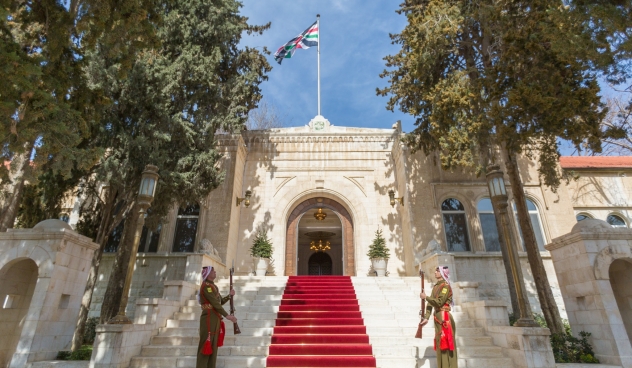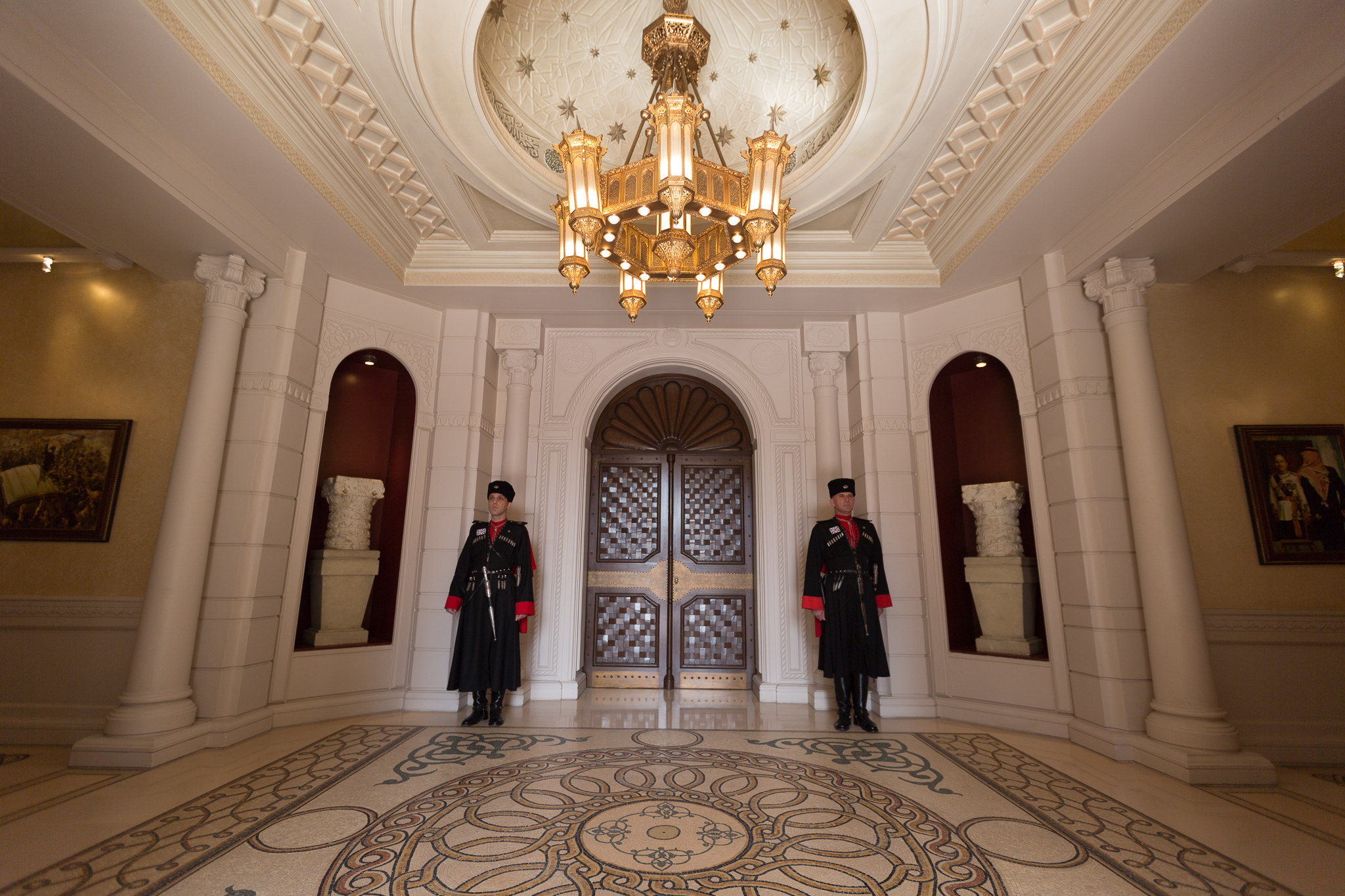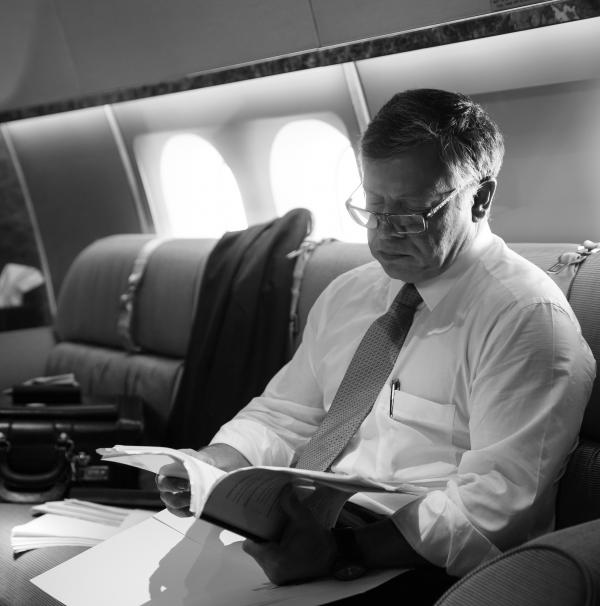Basman Palace

Built in 1950, Basman Palace is located east of Raghadan. It was built to be a headquarters for the RHC, housing the offices of the King, princes and princesses and the RHC chief. The need for the Palace arose with the expansion of the state and the increase in the number of institutions, which called for an administrative structure to undertake the tasks connected to the Throne.

King Abdullah I named the palace Basman in reference to the Arabic word ‘basma’ (smile) and to rhyme with Raghadan. The Palace underwent various expansions and was built over two phases. Its design combines Islamic architectural arts with authentic Arabic heritage and modern building requirements.
The rear of the Palace (overlooking Marka airport) was bombed during the 1967 Arab Israeli War, but it was later restored to its original form.
His Majesty’s flag flies over Basman Palace when the King is present at the RHC.
Basman Palace has two entrances. The main entrance, known as Al Qitaa, is marked by the signature of King Abdullah I, engraved into a green-coloured stone above the main gate. This entrance leads into several multi-purpose halls to the left and right.
On the left of the entrance is the Basman Hall, which has a wooden floor and hosts receptions and banquets. It leads to the Cinema Hall, where a Quranic verse is inscribed in the ceiling. This is where His Majesty receives guests, well-wishers and ambassadors. It leads to the Peace Hall.
To the right of the entrance is a hall decorated with art pieces and various possessions, including a replica of the top of a rain gauge to measure rain water in Muwaqqar pond with Ayat Al Kursi (Verse 255 from Surat Al Baqara in the Quran) inscribed at the top. Peace Hall also features a collection of photos chronicling the events of the Great Arab Revolt and the building of the Jordanian state; it extends into a number of multipurpose halls, such as the elegantly decorated Hall of Pictures, which showcases the pictures of Hashemite kings and leads to a private meeting room.
The second main entrance to Basman Palace is accessible through a large spiral staircase, to the opposite of which is a beautiful fountain. At the top of the stairs is a ceiling decorated with artistic designs inspired by Islamic architecture.


